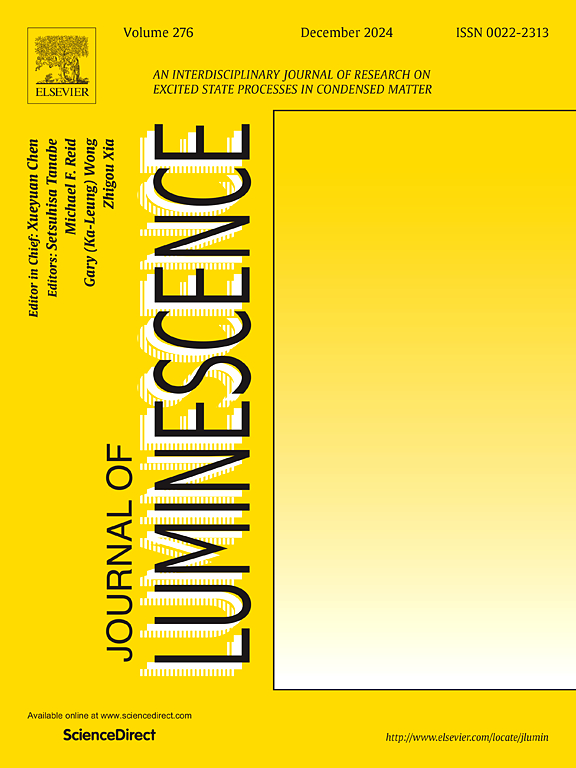h-BN粉末在中子剂量学中的热释光特性
IF 3.3
3区 物理与天体物理
Q2 OPTICS
引用次数: 0
摘要
中子辐射在核能发电、医学放疗和科学研究等诸多领域都具有重要意义。但是中子的独特特性使得精确的剂量测量和监测成为可能。六方氮化硼(h-BN)的特殊结构稳定性和硼的存在使其成为中子剂量测定的可行选择。本文研究了中子辐照h-BN粉末的热释光(TL)剂量学特性,重点研究了其剂量响应特性、发光曲线特征、线性指数、灵敏度、衰减和再现性。结果表明,h-BN在245°C左右呈现出清晰的TL辉光曲线,其峰值在4-15 Gy的剂量范围内具有潜在的应用前景。研究表明,h-BN具有较强的线性和亚线性特性。增加中子剂量后,TL灵敏度几乎不受影响,重复性实验证实了重复剂量测量的适宜性,可靠性高,标准变异为2.39%。此外,在照射28天后,衰落分析显示最小的信号损失(⁓19%),表明电荷载流子在陷阱中保留了很长一段时间。此外,通过初始上升、辉光曲线反褶积和峰形等方法确定了动力学参数。观察到的延长寿命表明,陷阱可以有效地在较长时间内保持电子-空穴对,这是适合于TL剂量学的关键特征。这些累积的结果验证了h-BN是一种高度稳定和有效的中子剂量计,非常适合需要精确和一致剂量测量的情况。本文章由计算机程序翻译,如有差异,请以英文原文为准。
Thermoluminescence characterization of h-BN powder for neutron dosimetry applications
Neutron radiation has significant implications in numerous fields, such as nuclear power generation, medical radiotherapy and scientific research. But the unique features of neutrons render accurate dose measurements and monitoring. The exceptional structural stability of hexagonal boron nitride (h-BN) and the presence of boron has made it a viable option for neutron dosimetry. The present work investigates the thermoluminescence (TL) dosimetric characteristics of neutron irradiated h-BN powder, focusing on its dose-response, glow curve features, linearity index, sensitivity, fading and reproducibility properties according to the standard TL procedure. The findings demonstrate that h-BN presents a clearly defined TL glow curve with a peak-maxima around 245 °C, indicating its potential application in neutron dosimetry covering the dose range of 4–15 Gy. This study reveals that h-BN exhibits greater linearity with sublinear behavior. The TL sensitivity remains almost unaffected by increasing neutron doses and the appropriateness for repeated dose measurements is confirmed by reproducibility experiments, which show high reliability with a standard variation of 2.39 %. Furthermore, after 28 days of irradiation, fading analysis shows minimal signal loss (⁓19 %), demonstrating that charge carriers retain in trap for long period. Moreover, the kinetic parameters were determined through the application of initial rise, glow curve deconvolution, and peak shape methods. The observed extended lifetimes indicate that traps can efficiently retain electron-hole pairs for an extended period, a key feature suitable for TL dosimetry. These accumulated results validate h-BN as a highly stable and effective neutron dosimeter, ideally suited for situations that demand precise and consistent dose measurement.
求助全文
通过发布文献求助,成功后即可免费获取论文全文。
去求助
来源期刊

Journal of Luminescence
物理-光学
CiteScore
6.70
自引率
13.90%
发文量
850
审稿时长
3.8 months
期刊介绍:
The purpose of the Journal of Luminescence is to provide a means of communication between scientists in different disciplines who share a common interest in the electronic excited states of molecular, ionic and covalent systems, whether crystalline, amorphous, or liquid.
We invite original papers and reviews on such subjects as: exciton and polariton dynamics, dynamics of localized excited states, energy and charge transport in ordered and disordered systems, radiative and non-radiative recombination, relaxation processes, vibronic interactions in electronic excited states, photochemistry in condensed systems, excited state resonance, double resonance, spin dynamics, selective excitation spectroscopy, hole burning, coherent processes in excited states, (e.g. coherent optical transients, photon echoes, transient gratings), multiphoton processes, optical bistability, photochromism, and new techniques for the study of excited states. This list is not intended to be exhaustive. Papers in the traditional areas of optical spectroscopy (absorption, MCD, luminescence, Raman scattering) are welcome. Papers on applications (phosphors, scintillators, electro- and cathodo-luminescence, radiography, bioimaging, solar energy, energy conversion, etc.) are also welcome if they present results of scientific, rather than only technological interest. However, papers containing purely theoretical results, not related to phenomena in the excited states, as well as papers using luminescence spectroscopy to perform routine analytical chemistry or biochemistry procedures, are outside the scope of the journal. Some exceptions will be possible at the discretion of the editors.
 求助内容:
求助内容: 应助结果提醒方式:
应助结果提醒方式:


